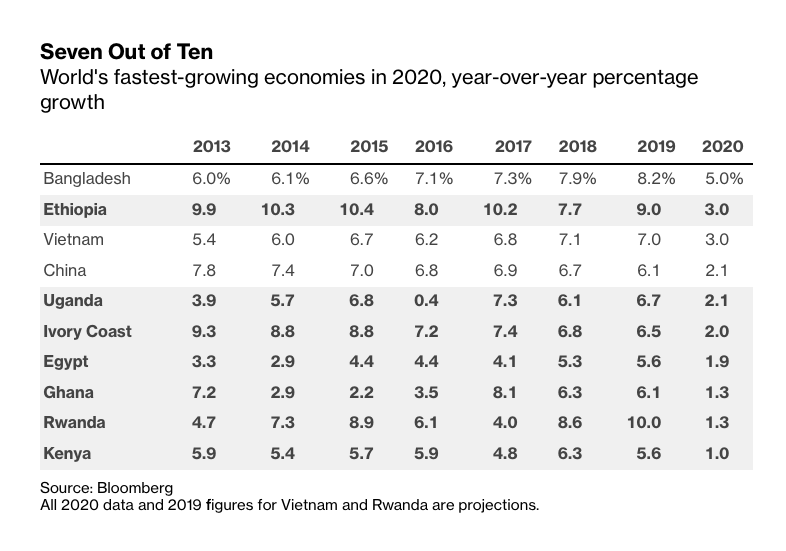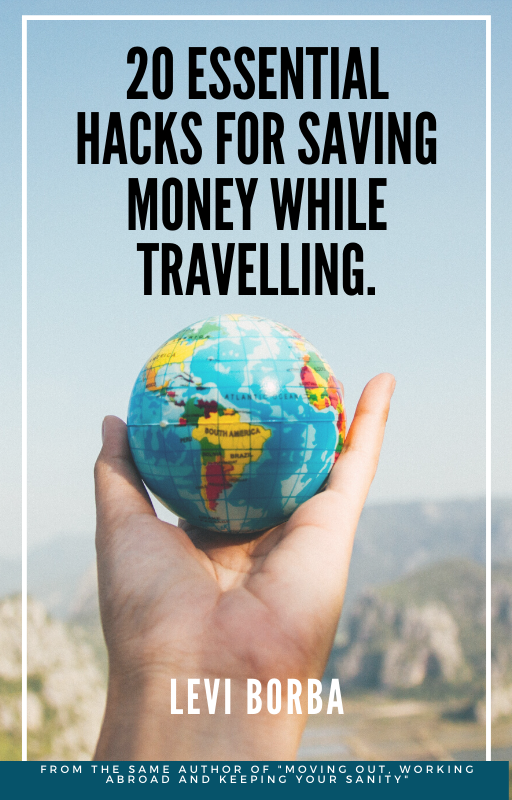4 Factors That Help Us to Understand Why Ethiopia Is Growing So Fast
I’ve always been fascinated by economic statistics, despite the fact that, contrary to what some economists may have you think, it’s not particularly good for making forecasts. So, in the course of my bizarre pastime of examining macroeconomic charts, I became curious about some regions of the world due to their seemingly endless economic expansion. In the group, Ethiopia was included. I asked myself Why is Ethiopia growing so fast?
The country’s stunning economic achievements, along with its fascinating past and promising future, dared me to travel there and witness it for myself. So I went to Addis Ababa and here I’ll tell you about the factors that might make Ethiopia the next regional power.
Why Is Ethiopia Growing So Fast?
Let’s get one thing straight: The Ethiopian economy’s development is extraordinary, especially given the size of the country (it has 115 million people, so it is not a small nation).
Recently the Ethiopian embassy in London shared the table below, which gives a good idea of how fast is Ethiopia growing.

Even in its weakest pre-COVID year, 2018, the Ethiopian economy expanded faster than its neighbors.
Ethiopia, along with China and Myanmar, is the only country in the world to have grown its economy by more than 300% so far this century.

Several reasons have come together to cause this remarkable growth in Ethiopia’s economy. The 4 most important ones I listed below.
First: Stability is luring hordes of foreign investors to Ethiopia
Ethiopia’s economy is reasonably tranquil, albeit it is not as stable as that of Botswana or Ghana (two countries with significantly lower populations). This becomes more apparent when contrasting Egypt and Nigeria, two other major African economies that rely largely on oil prices.
Ethnic strife is a major problem in Ethiopia, as it is across Africa. Nonetheless, Addis Abeba, the capital, is mostly spared from these conflicts.
The peace and quiet make it a desirable location among investors seeking for emerging markets. As a result, the influx of foreign investment is increasing by close to 30% annually. H&M and Guess, for example, moved their manufacturing to the nation in search of cheaper labor.
Some scholars even go so far as to say that Ethiopia can partially replace China due to its rapid modernization and rising manufacturing capacity.
Check also: The 7 Countries With the Worst Work-Life Balance
Second: The Ethiopian provided significant funding for transportation projects
Researchers that studied China’s and Ethiopia’s economic growth emphasized the importance of China’s lavish spending on infrastructure, which they say might have a similar effect on Ethiopia’s economy.
Investments in Ethiopia’s infrastructure have been continuous. The growth of Ethiopian Airlines, the finest airline on the African continent, is the starting point. The firm is one of the rare examples of a state-owned enterprise in Africa run by a professional management team that is independent of political meddling.
Ethiopian Airlines’ meteoric rise, which has made it the world’s fourth-largest airline in terms of the number of locations it serves, has prompted the government to undertake two further large-scale initiatives.
The primary one was the expansion of the recently opened Bole International Airport. Second, the 5-billion-dollar Absera mega-airport. The airport will be the biggest in Africa.
Ethiopia is enhancing its infrastructure in ways that go well beyond the country’s air travel options. It also incorporates urban transportation systems like highways and trains. The first light-rail system in the area began service in Addis Abeba, the capital, in 2015.
Third: They are building a massive dam and will have an electrical surplus
Ethiopia had significant hunger issues. Unfavorable weather conditions for farming were usually to blame for this.
The geography of Ethiopia makes irrigation difficult unless farmers have access to energy (and water pumps). Therefore, the government is building a massive hydroelectric power plant to improve food safety.
It’s called the Grand Ethiopian Renaissance Dam (GERD), and it might take up to 15 years to fill the reservoir before it can begin full operations. When fully operational, it will generate enough power to meet the demands of 200 million people.
With a population just over 100 million, Ethiopia might expect an electrical surplus it can sell abroad. Assuming a 365-day year, this might bring an extra $1 billion to annual earnings.
Ethiopian infrastructural improvements guaranteed that the country had no mention among the dirtiest cities in the world.
There are two interesting facts regarding the Grand Ethiopian Renaissance Dam (GERD)
First, the Ethiopian people themselves provided virtually all of the funding through bonds and taxes.
The result was that the government’s debt remained manageable. Construction was self-funded, therefore it was not dependent on foreign countries that may be pressured by Egypt to cut funding if they didn’t approve of the project. Egypt’s motives for acting this way are unclear. That brings us to our second unusual observation.
Second — The Blue Nile is where the dam is located.
This river begins its journey in Ethiopia and ultimately flows into Egypt via the Sudan. Nearly 85 percent of Egypt’s freshwater comes from this source. Ethiopia and Egypt’s governments had severe diplomatic confrontations over concerns that the project would give Ethiopia too much influence over Egypt’s water supplies.
Fearing a military attack on the hydropower project, Ethiopia set up anti-aerial fortifications and military installations in the area.
Fourth: They grew from their experiences
The Derg, or the Provisional Military Government of Socialist Ethiopia, was one of the worst African governments ever.
In 1974, the Marxist government was created after an overthrow of Emperor Haile Selassie. Up until 1987, the country was ruled by communists. Famine, destitution, and public executions all defined this era.
There were mass killings on an industrial scale, with many people being put to death.
Qey Shibir, which means “Red Terror” in Amharic, describes the time of the Derg that saw the highest violence. The number of deaths over a few years has been put as high as 750,000. Absolute genocide.
When I was in Addis Abeba a few years back, I stopped at the Red Terror Martyrs Museum, which preserves the history of the Derg terror.
Addis Abeba is currently one of the safest capitals in the world, making it an attractive destination for tourists and permanent residents alike. One reason for this is the impact of recalling a period of extreme violence.

Conclusion: Why is Ethiopia growing so fast?
In sum, there are still dangers, but the future for Ethiopia seems bright.
The 4 reasons for this wave of economic growth and optimism are:
1st — Stability is attracting foreign investors.
2nd — The Ethiopian government is investing heavily in infrastructure.
3rd — The Grand Ethiopian Renaissance Dam will provide all the energy the country needs to grow (and more).
4th — Ethiopia learned from its past experiences.
An extra plus: Ethiopia has very good coffee.
In recent decades, Ethiopia has experienced a period of great optimism. Consistent economic expansion, the end of a 20-year war with Eritrea (for which Prime Minister Abiy Ahmed won the Nobel Peace Prize), and the completion of much-needed infrastructural projects inspire optimism about the future.
But it is still mostly an agricultural nation. Extreme poverty and starvation can arise after a season without rain. South-Sudan and Somalia are two of its major war-torn neighbors. Still active in the countryside and, apparently, with Egypt’s help, guerrilla organizations constitute a threat to peace.
With all of its obstacles, Ethiopia may not be a narrative of African triumph like Botswana, but for such a big country, it warrants a healthy dose of hope.
If you enjoyed this article about why is Ethiopia growing so fast, here are a few other reading suggestions for you:
Save Money on Travel : 4 Travel Hacks to Give You Peace of Mind
The Easiest Countries to Adopt From – A Guide.
The Dreamy Destination That’s 50% Cheaper to Live In than Spain or Florida
Subscribe (for free) to receive my articles directly in your inbox and receive a special gift. If you enjoy this article, please consider becoming a Medium member by using this link and have access to premium, unbiased content from authors not tied to big media.
Levi Borba is the founder of The Expatriate Consultancy, creator of the channel The Expat, and best-selling author. Some of the links in this article may be affiliate links, meaning that the author will have a commission for any transaction.




